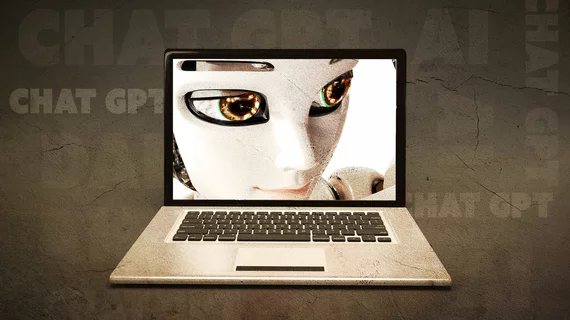ChatGPT has proven its utility on multiple medical fronts, but one of its most recent endeavors could be particularly beneficial to both radiologists and the patients they serve.
When experts recently tested the chatbot’s ability to simplify radiology reports in a way that is more easily comprehensible for patients, they found that it provided significant improvements in bridging the gap between complex medical terminology and the average American’s reading level.
Radiology reports are typically written in language well above the average American adult’s eighth grade reading level, making them a source of confusion for patients. Improving this has been a focus of experts in the imaging field for some time, and the emergence of large language models like ChatGPT has only amplified these efforts.
Experts recently detailed their experiences with using the chatbot to break down complex medical terminology contained in radiology reports into layman’s terms that the average reader can understand. Their findings were shared June 8 in Clinical Imaging.
“One of the more overlooked features of ChatGPT is its ability to simplify complex text into easily understandable summaries, which we believe could be adapted to simplify radiology reports,” corresponding author of the new paper Hanzhou Li (Hanssen), with the Department of Radiology and Imaging Science at Emory University School of Medicine, and colleagues noted.
To assess ChatGPT’s ability to simplify these reports, the team gathered a sample of 100 radiograph, 100 ultrasound, 100 CT and 100 MRI radiology reports from their institution’s database. They then had ChatGPT process the reports using the prompt “Explain this radiology report to a patient in layman's terms in second person: <Report Text>”. Report length, reading ease scores and reading levels were calculated for each set of reports.
Out of the 400 reports, just 15% were written at or below an 8.5 reading level. The reports' mean reading level decreased to 5.8 ± 1.1 after ChatGPT simplified them. A side-by-side comparison showed that ChatGPT was able to improve the reports on all fronts, reducing the mean word count by 61, mean reading level by 4.6 and mean reading ease score by 45.5.
While integrating ChatGPT or similar transformer-based models into clinical flows does require additional considerations, such as privacy concerns and the oversight needed to ensure the chatbot is providing accurate information, the authors maintain that “there is a real opportunity to task LLMs with effective report summarization to bridge the knowledge gap between patients and their radiology reports.”
The study abstract is available here.

